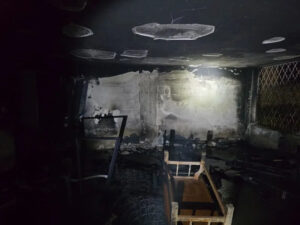
URGENT UPDATE: The United States has significantly expanded its missile defense network across the Pacific, safeguarding its homeland—especially the critical territory of Guam—against evolving missile threats from nuclear-armed adversaries. A detailed map released by Newsweek reveals the strategic locations of major U.S. land- and sea-based defense elements, stretching from the West Coast to allied territories in East Asia.
The urgency of this development comes as North Korea continues to enhance its missile capabilities, with experts warning that the nation could possess up to 50 intercontinental ballistic missiles by 2035. This escalation has prompted the U.S. to reinforce its defenses, particularly in light of recent public discourse surrounding the effectiveness of the Ground-Based Midcourse Defense (GMD) system, especially following the release of the Netflix film, A House of Dynamite.
The Pentagon has distanced itself from the film’s portrayal of the GMD’s failures, emphasizing that it “does not reflect the views or priorities of this administration.” A U.S. Defense Department official confirmed that the GMD is designed to protect the U.S. homeland primarily against threats from North Korea.
As of now, 44 Ground-Based Interceptors (GBIs) are deployed—40 at Fort Greely in Alaska and 4 at Vandenberg Space Force Base in California. The GMD’s interceptors, equipped with Exoatmospheric Kill Vehicles, are engineered to destroy hostile warheads outside Earth’s atmosphere. The Missile Defense Agency highlights that the GMD can intercept threats during the midcourse phase, where missiles coast in space for up to 20 minutes.
In a recent report by the U.S. Defense Intelligence Agency, it was noted that North Korea currently has “10 or fewer” ICBMs capable of reaching the U.S., but that number is expected to rise significantly. Experts indicate that the GMD’s ability to intercept multiple threats is currently limited, potentially requiring up to four interceptors per incoming missile.
Newly released data indicates the GMD has achieved a 55 percent intercept rate in tests since 1999, a statistic that raises questions about its reliability in real-world scenarios. The Missile Defense Agency asserts, however, that the system has demonstrated a “100 percent accuracy rate in testing for over a decade.”
The U.S. is also pushing forward with the development of the Golden Dome, a next-generation missile shield designed to counter a wider array of aerial attacks. As tensions rise with Russia and China, both nations are reportedly advancing their missile technology, further complicating the strategic landscape.
To bolster its defense capabilities, the U.S. has deployed a network of radars across the Pacific, including the Long Range Discrimination Radar in Alaska and the Upgraded Early Warning Radar in California. These systems are critical for early detection and tracking of missile threats.
In addition to land-based systems, the U.S. operates the Sea-Based X-Band Radar, which has recently been spotted en route to Pearl Harbor, Hawaii. This mobile radar platform enhances the U.S. ability to monitor and respond to missile threats across the Pacific.
Guam remains a focal point in U.S. missile defense strategy, currently housing the THAAD system and under development is the Guam Defense System, designed to provide comprehensive coverage against missile threats. The Pentagon’s investment in these defense systems is a direct response to the increasing threats posed by North Korea and the military capabilities of other regional adversaries.
As defense experts assert, the evolving missile threat landscape necessitates a robust and adaptable defense strategy. The U.S. aims to ensure that its missile defense systems remain capable of countering potential threats, maintaining the safety of the American homeland as well as its allies.
WHAT’S NEXT: As developments continue, watch for updates on the operational effectiveness of the GMD and the progress of the Golden Dome initiative. The U.S. commitment to enhancing its missile defense capabilities underscores the urgency of addressing the growing threats from adversarial nations.





